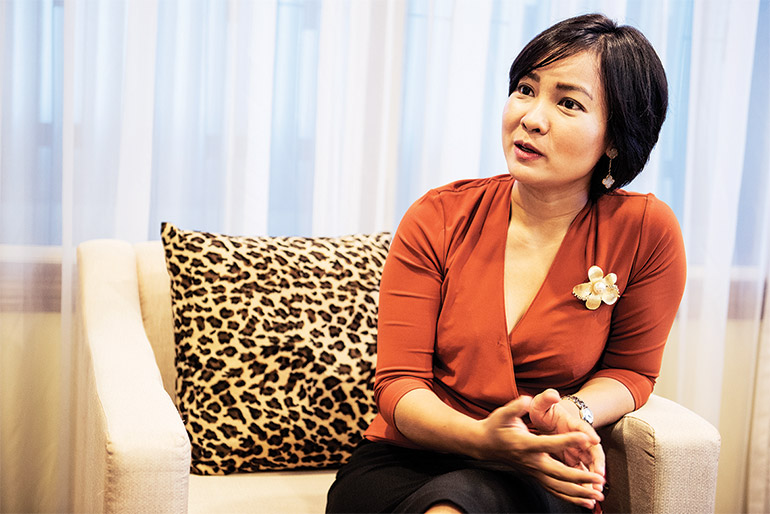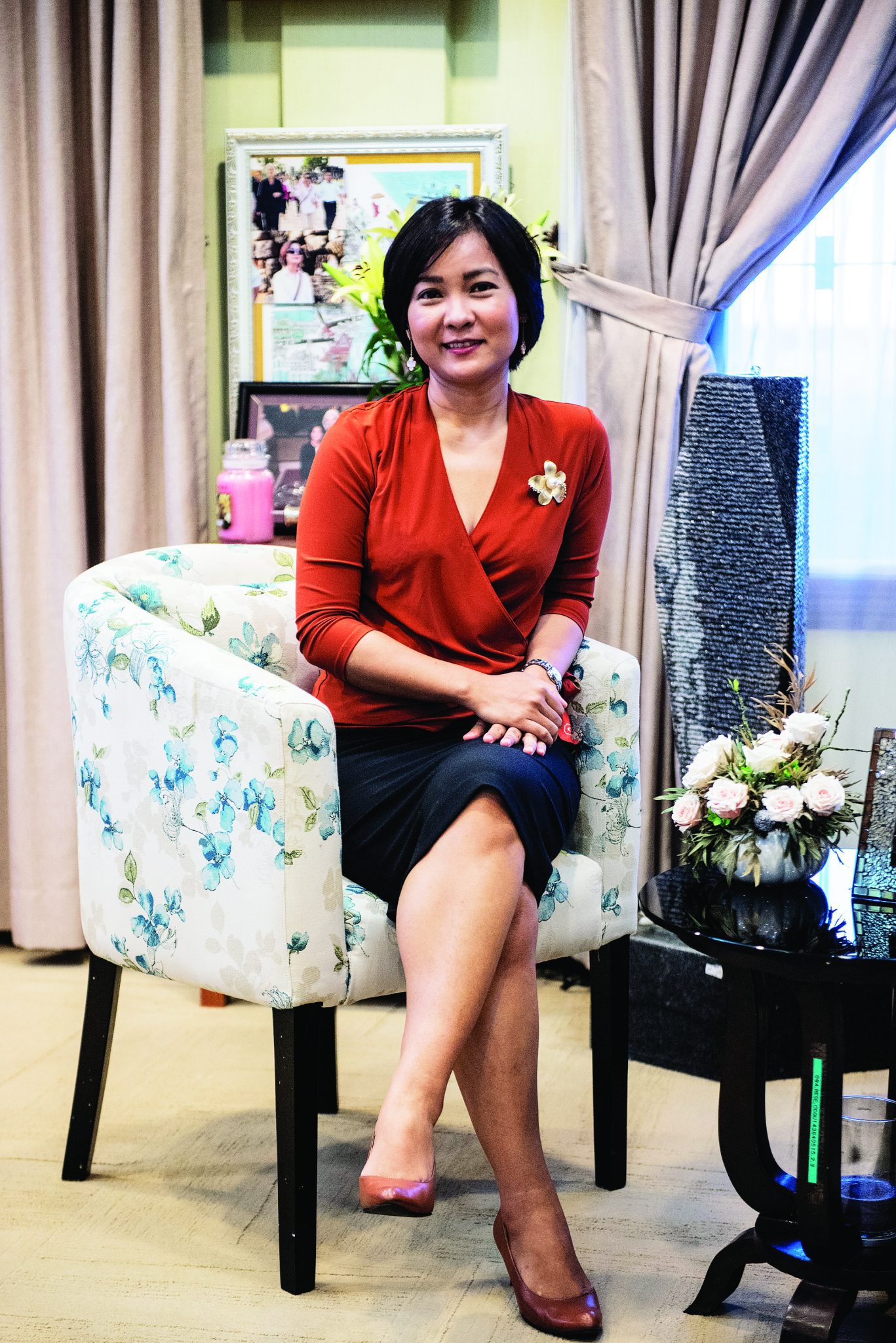The National Bank of Cambodia director general talks about dedollarisation, the decision to cap microfinance interest rates and the potential of blockchain technology

You’ve now been serving as director general the National Bank of Cambodia (NBC) for four years. How has banking evolved in Cambodia?
I’ve seen a lot of new technology – especially 4G – coming into Cambodia. Tech plays a much more important role now in the banking system. When I first joined there were about two mobile payment providers, but now there are so many. That’s what we want to see because competition will ultimately benefit the customers. This year we’ve been able to launch FAST (Fast And Secure Transfer), which is a real-time money transfer from one bank account to another. All banks are required to be members. There are also many new instruments that allow the central bank to have more control over our monetary policy implementation. We have introduced our LPCO (Liquidity Providing on a Collateralised Operation) and we lend to local banks at a very low rate, which encourages them to lend more in local currency. We have also set up inflation forecasting and are working on GDP forecasting.
What are the key policies that you would like to establish next year?
In the next few weeks we will launch our Central Share Switch, which will connect all the ATMs of all the banks together [so that account holders can withdraw money from any ATM in the country]. All the banks are now required to be members by the end of 2018. We’re also taking on the regulation of payment service providers. Previously, payment service providers were [regulated] under the umbrella of the banks, as third party processors, because we didn’t know how to regulate them back then. But now, as the industry has grown, we are finding that this setup does limit their ability to introduce new products and services and to innovate. So over the next year, service payment providers will be able to operate on a standalone basis, but they will have to have their own minimum capital requirement and comply with reporting regulations.
What is the biggest challenge for the central bank?
This year we are holding our first conference on statistics. As an organisation that does a lot of economic forecasting and analysis, the fact we are not able to gather the numbers that we need to is very frustrating for us. To make informed decisions, you need proper analysis. I want to see changes in behaviour around this. It’s so important for the country to be able to capture what is really happening. I don’t think we can do that right now, because we don’t have the statistics to analyse. Some of these foreign investors refuse to see us because they don’t want to disclose their numbers.
The elites will always try to protect themselves. And I believe that we have to look after the poor’s interests. You know, banks, microfinance – they’re not charitable organisations, right? They will go anywhere that will make them money”
Do you think the Ministry of Finance should be doing more about this?
There is a statistical law, implemented by the NIS (National Institute of Statistics), but it’s only recently been implemented. The onus is also on the private sector. So many of them just don’t want to bother with it. The idea is to get them to understand it will be good for them in the long run, for business analysis and to formulate new strategies.
Three months on from the decision to cap the interest rates charged by microfinance institutions (MFIs) at 18% per annum, what is the state of the sector?
No MFIs have closed up, but it’s too early to make a meaningful analysis, especially since it only applied to new loans. Certainly, the returns will be reduced for some, but I believe that, for many, they may actually benefit, because they can increase their volume, even though it is at a lower interest rate.
Some have suggested it was a populist political manoeuvre. Was this a decision made in the interest of the Cambodian people and economy?

This was not a decision that was made lightly. It was based on the very high interest rates that they were charging – these MFIs were making a lot of money. Sure, their argument is that it is a high-risk sector therefore investors expect high returns, which is fine in theory. But if you looked at the real non-performing loaning of the microfinance sector, it is actually very low – lower than the banks – and most of the MFI returns on assets were higher than the banks. So if the banks can survive on the lower returns there must be a way that the microfinance industry can do it too. Yes, operation costs are high for MFIs, and I would have bought that idea five years ago, but there is now tech that would allow them to provide these kinds of services at a much lower cost. Some of the MFIs are too complacent to look into these; they are simply making too much money. We want them to look into alternative services for the demographic they serve.
Many analysts – even some of the NBC’s own, who criticised the cap in November 2016 – have said interest rate caps are bad public policy and hurt the poor most, restricting their access to finance and pushing them to loan sharks with even higher rates.
Well, the elites will always try to protect themselves. And I believe that we have to look after the poor’s interests. You know, banks, microfinance – they’re not charitable organisations, right? They will go anywhere that will make them money. But nobody would lend to someone with no income, even if we didn’t enforce a cap. I don’t think in the long run this will penalise the poor. In the short term, these MFIs will have to adjust their business model, and they’ll likely have to stop giving out smaller loans because they can’t charge the usual 36% they did. But the MFIs can’t give up on that demographic, because that is their income generator. They will find a way to adjust their product so that these people can still be included. And if they can’t redesign a product that suits them then they are out of business.
Most businesses can’t be bothered to deal with exchanging [from dollars to riel], yet they are passing the exchange rate on to their workers and I think that is unfair”
What do you make of the opposition CNRP’s recent calls for Cambodia to revert to the riel within a year?
The ideal situation for any country is to be able to use its own currency, but for Cambodia we have a long legacy of dollars circulating in our country. I believe that to achieve it overnight – or within a year – would actually be detrimental to the economy. I prefer to call it `rielisation’ but we are very cautious as to how we move forward with it. We also need to acknowledge the fact the dollar has brought in great benefits for us, especially when it comes to FDI. We’ve remained very competitive because of this. It also helped us lower our inflation, but then at the same time, as our economy grows, the role of monetary policy becomes very important, and this cannot be implemented if the country is using the dollar. We are bound by their monetary policies and, particularly at this moment in time in the US, it is worrying. It’s not feasible to achieve the full transition into the riel in one year; I think it would take five to ten.
How do you promote the riel to foreign companies?
We’ve been lobbying the garment sector recently – it’s one of the biggest payrolls here. So it should start in that sector, and I really hope they change their mind. If the factories care enough about the welfare of their employees, why don’t they switch? The lion’s share of these workers’ expenditure, aside from their rent, is in local currency. Say they are paid $100 [a month], 40% gets sent by Wing to family in rural areas, and then these families are exchanging it into riel. When we interviewed money exchangers in the provinces, by far their biggest business is in dollars to riel conversion. So the families are copping the conversion fees. But what I want the factories to understand is that `rielisation’ would in fact benefit them too. If wage increases were done in riel, you could increase them at a bigger variety of rates. You have much more flexibility and control of that. You could increase 1,000 riel every three months instead of $1 every year, and the workers are happier because there are regular increments. Most businesses can’t be bothered to deal with exchanging [from dollars to riel], yet they are passing the exchange rate on to their workers and I think that is unfair. At the moment, the dollar and riel have been relatively stable but we are not pegging our currency to the dollar like some other countries. It’s a managed float and – I don’t want to scare people – but there may be a time when we just let it go and, depending on external factors, the riel could depreciate. If that happened, for the farmers, for the poor that had to repay loans in dollars, they would be dead.

How do you feel fintech can improve the Cambodian economy?
I am actually a very strong believer in blockchain. Many people have tried to dissuade me on this; they say it’s too early. But I disagree. I believe it can change a lot of things and can make transacting much freer. I was at a consumer reports conference last year and the speakers were talking about the ability of fintech and data modelling to profile people by just looking at the amount of smiley faces they use on social media, or their punctuation. And I learnt about how blockchain allows people to send assets of value like they send a photo or document online, without involvement from a third party.
What benefits could blockchain have for Cambodia?
It wouldn’t just change the way we do finances and allow for more freedom, but it would change the way we govern the country and the way we do politics. If we were able to have a cashless economy look at how much money we could save in terms of printing, how much we could save the environment with less paper being used, less transport. We would also be able to have more transparency on what is happening and trace things more effectively.
What is the NBC doing to introduce blockchain in the Kingdom?
We have partnered with a Japanese startup and will have a blockchain trial in the third quarter this year, and depending on the results, we will be partnering with the parties involved, mainly the banks. At the end of the day, we need everyone to buy into the idea for it to work. I think a cashless society would benefit everyone in Cambodia, even the businesses. There is so much it can do to fight corruption.
As governor of the NBC, your dad still calls the shots. Does his position as a top ruling party man conflict at all with the NBC’s duty to do what’s best for the country’s financial system?
No, we strictly make decisions as per the hierarchy of the structure here at the NBC. So when any decision is made, everyone within the eight-member management committee has a voice. Some of the ideas I put forward are not necessarily agreed by others and don’t pass. He plays a very democratic [role] in the meeting room. He does not impose his views or beliefs, whether on his children or on his subordinates at work.
Do you think the government is doing enough to promote women into senior positions?
I think they are on the right track – I don’t know if it is enough, though. The new Koh Kong governor is a woman, the first in the country. The number of women in the cabinet has also increased significantly, so that is promising. But there is always room for more. More could definitely be done.


